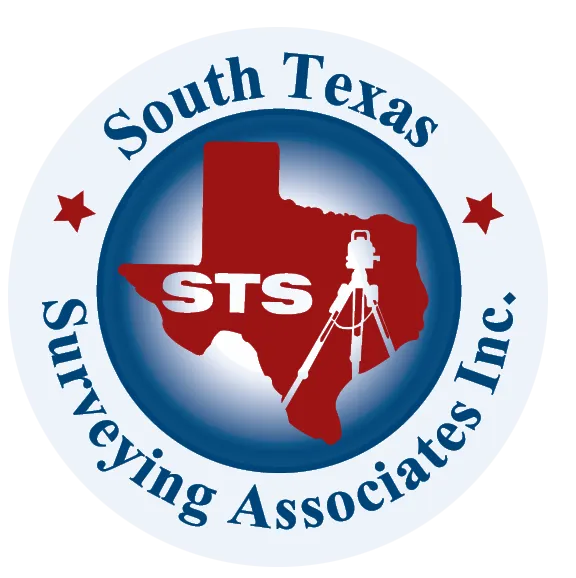Surveying Texas Since 1980 Family Owned, Customer Devoted | Firm #10045400 | 281-556-6918
See Our Latest Blogs

Boundary Disputes in Commercial Real Estate: How Surveys Help
"Texas, often referred to as the Lone Star State, is a thriving hub for economic growth and innovation, making it an attractive destination for commercial real estate investment." - Chris Evans
Boundary Disputes in Commercial Real Estate: How Surveys Help
Commercial real estate transactions can be complex, and one of the key issues that arise in many deals is the question of boundaries. Boundary disputes are especially common in fast-growing urban areas like Texas cities, where development is rapidly changing the landscape. As property values increase, the importance of accurately determining property lines becomes even more critical. In commercial real estate, an error in property boundaries can result in costly disputes and legal challenges, which is why accurate boundary surveys are essential.
The Role of Boundary Surveys in Resolving Disputes
Boundary surveys are comprehensive assessments that establish the legal limits of a property. They clarify where one piece of land ends and another begins, using precise measurements and landmarks. These surveys are conducted by licensed surveyors who use specialized tools and techniques to provide accurate, reliable data. In commercial real estate, boundary surveys play a vital role in resolving disputes by providing indisputable evidence of property lines.
Whether disputes arise due to misunderstandings, encroachments, or conflicting land use, a professional survey can offer clarity and prevent prolonged legal battles. In Texas cities, where property developments frequently overlap, boundary surveys ensure that owners and developers can move forward confidently, knowing the exact extent of their land holdings.
Types of Boundary Disputes in Commercial Real Estate
Several types of boundary disputes can arise in commercial real estate. Understanding the nature of these disputes is crucial in knowing when and how a boundary survey can help:
Encroachments: This occurs when one property owner builds or extends a structure that crosses over into an adjoining property. In commercial developments, such as shopping centers or office complexes, even a minor encroachment can cause significant legal and financial complications.
Overlapping Titles: In some cases, two property owners may claim rights to the same portion of land due to discrepancies in their deeds or errors in previous surveys. This issue often arises when historical boundaries were poorly defined or when properties were divided without accurate surveying.
Easement Conflicts: Easements grant third parties certain rights to use a portion of a property, such as for utility lines, access roads, or public pathways. Disputes often arise over the location or extent of these easements, particularly when new developments interfere with existing rights of access.
Boundary Line Adjustments: In urban areas like Texas cities, boundary lines may be adjusted over time due to new infrastructure, zoning changes, or development projects. These adjustments can lead to disputes if property owners disagree about where the new lines should be.
In each of these scenarios, a boundary survey can provide definitive answers, showing exactly where property lines are located and helping to resolve disagreements before they escalate into costly legal conflicts.
How Boundary Surveys Support Legal Claims
In a boundary dispute, one of the most valuable pieces of evidence a property owner can present is an up-to-date survey. These surveys carry significant weight in court because they are conducted by licensed professionals who follow strict standards and use advanced technology to ensure accuracy.
When a boundary dispute reaches the legal system, courts rely heavily on land surveys to make their rulings. A professional boundary survey can show the exact limits of a property, identify any encroachments, and clarify the legal description of the land. For commercial real estate developers and property owners, having a survey in hand provides an extra layer of protection and credibility in disputes.
Additionally, a survey can reveal any previous errors in the property’s deed or title, allowing the owner to correct these issues before they become major problems. This proactive approach is particularly important in fast-growing regions like Texas cities, where rapid development can lead to frequent land use conflicts.
The Importance of Surveys in Texas Cities
Texas is home to some of the fastest-growing metropolitan areas in the United States, including Austin, Dallas, Houston, and San Antonio. This rapid growth has led to an increase in commercial real estate projects, from office buildings and industrial complexes to retail centers and mixed-use developments.
With so much development occurring at such a fast pace, boundary disputes are becoming more common. Surveys are an essential tool for avoiding these disputes, as they ensure that property lines are clearly defined from the outset. This is particularly important in Texas, where urban expansion often encroaches on previously undeveloped land or older properties with poorly documented boundaries.
In cities like Austin, where high demand for commercial real estate is driving rapid development, surveys help developers and property owners protect their investments by ensuring they have a clear and accurate understanding of their property lines. Accurate surveys are a key component of successful commercial real estate transactions, as they prevent misunderstandings and legal challenges that can delay or derail projects.
Prevention is Better than Resolution
While surveys are essential in resolving boundary disputes, they are even more valuable in preventing them. Conducting a boundary survey before purchasing, selling, or developing a property can save time, money, and frustration by identifying potential issues early. Commercial real estate transactions involve significant investments, and ensuring that the boundaries are accurate from the start is a critical step in protecting those investments.
In addition to protecting property owners from disputes with neighboring properties, boundary surveys also provide essential information for developers. A survey can reveal any physical features, such as natural landmarks or man-made structures, that could affect the development of the property. This information allows developers to plan projects more effectively, avoiding costly delays or redesigns caused by boundary-related complications.
Ensuring Compliance with Local Zoning and Regulations
In fast-growing cities, boundary surveys are also vital for ensuring compliance with local zoning laws and regulations. Zoning ordinances dictate how land can be used, and a survey provides detailed information about the property's boundaries and any features that may impact its development.
For example, a boundary survey can reveal whether a property lies within a floodplain, which may restrict its use for certain types of commercial development. Similarly, surveys can show whether a property has any existing easements that could limit the types of structures that can be built on the land. By identifying these potential issues early, developers can adjust their plans to ensure compliance with local laws and avoid legal disputes down the line.
FAQs
Why are boundary surveys important in commercial real estate?
Boundary surveys are essential in commercial real estate because they accurately define property lines, prevent disputes, and provide critical information for development and legal purposes.
How do boundary surveys help resolve encroachments?
Boundary surveys clearly identify property lines, showing if a structure or feature encroaches onto another property. This data helps property owners resolve encroachments before they become costly legal issues.
Can boundary disputes be resolved without going to court?
Yes, many boundary disputes can be resolved through negotiation or mediation, especially when supported by accurate boundary surveys that clarify the property's legal boundaries.
How do boundary surveys affect commercial development in Texas cities?
In rapidly developing Texas cities, boundary surveys help developers avoid legal challenges, ensure compliance with zoning laws, and protect investments by providing accurate information about the property's limits and features.
When should a commercial property owner get a boundary survey?
A boundary survey should be conducted before purchasing, selling, or developing a property to prevent disputes and identify any potential legal or zoning issues that could affect the property's use.
Do boundary surveys cover easements and rights-of-way?
Yes, boundary surveys typically include details about any easements or rights-of-way on the property, which can impact how the land is used or developed.
Conclusion
Boundary disputes in commercial real estate can be costly and time-consuming, but accurate boundary surveys offer a reliable solution. Whether preventing encroachments, clarifying overlapping titles, or ensuring compliance with local zoning laws, surveys provide the critical data needed to resolve disputes and protect property investments. In fast-growing Texas cities, where real estate development is booming, boundary surveys are indispensable tools for ensuring successful and conflict-free commercial transactions.
Delivering Land Surveys with Attention to Detail
George Owens
Commercial Broker

I have worked with many surveying companies, but South Texas Surveying stands out for their exceptional professionalism, attention to detail, and commitment to their clients.
Kim Wexler
Project Manager

Their accurate and thorough surveys make my job a lot easier, their ability to communicate effectively with all parties involved is commendable. I highly recommend South Texas Surveying.
James Cart
Homeowner

As a new homeowner, I was thoroughly impressed with the professional service provided by South Texas Surveying. I high recommend their services to any one buying a home in Houston.
Contact Us
Email: [email protected]
Office Address: 11281 Richmond Ave
BLDG J, Suite 101,
Houston, TX 77082
Office Hours: Mon – Fri 8:00am – 5:00pm
Office Phone Number: 281-556-6918
11281 Richmond Ave
BLDG J, Suite 101,
Houston, TX 77082
Firm Number: 10045400
Resources
© Copyright 2024 South Texas Surveying Associates
